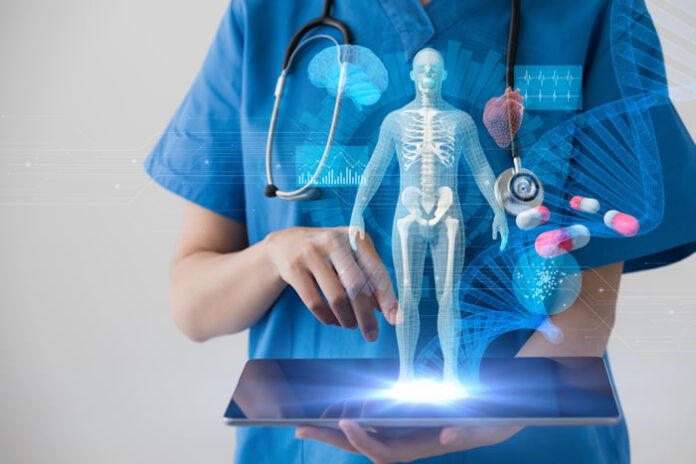The advent of Electronic Health Record systems and their accompanying documentation has created a deep fissure within the medical community. Epidemic-level numbers show that more and more physicians report feeling burnt out and depressed. The overall rate of work-life happiness reported by healthcare providers dropped below 50% thanks to the pandemic. Let’s talk about ambient cloud tech in healthcare.
Numbers released in Medscape’s 2021 physician lifestyle report state that 43% of all physicians report feeling burnt out. Of those burnt-out physicians, 58% say they feel that way due to the long list of bureaucratic tasks like note taking and EHR documentation. An additional 37% report that too many hours at work is the leading cause in their burnout and exhaustion.
Solving the physician burnout problem
If we step away from the statistical jargon for one moment we can consider this: for every two people we know who work in a clinical setting, it’s likely that one is severely burnt out. Even before the pandemic, 1 in 5 physicians said they planned to reduce hours due to burnout. On average, physicians spend only 1.5 minutes of each appointment looking at their patients face-to-face. Research finds patient satisfaction is directly correlated with face-to-face interaction. This was all before the pandemic-induced toll introduced to healthcare providers.
To solve the problem, many doctors turn to medical human scribes or dictation apps. The apps are cheap but inaccurate and awkward to use. Human scribes offer a better-quality outcome but are expensive and need hiring and training. The pandemic made more acute the dire need for front-line providers. This put a magnifying glass on the inefficiencies that prevent providers from seeing patients. It also became unsanitary and a friction point to have in-person scribes given the spread of COVID along with the increased frequency of virtual visits.
Cloud tech in healthcare dictation devices remove the need for physical tools or hardware and can be accessed through most internet-capable devices. Their ease of use makes them much more user-friendly than their predecessors. The accessibility that comes with cloud-based devices creates more expedited workflows and harmonious teams.
Technology dictation solutions
There exists a class of cloud-based medical dictation devices that integrate with EHR systems. These more encompassing devices use speech-to-text software and artificial intelligence to populate an EHR using the physician’s voice. Rather than simply capturing speech and converting it to a medical note that then must be translated into an EHR, these devices listen for explicit cues from the physician and then populate the fields directly.
These integrated devices are top of the line when it comes to medical dictation devices. They are accessible, scalable, and help reduce the total time a physician spends on their clerical work. However, delivering both the affordability and convenience of an automated scribe with out-of-the box accuracy comparable to that of human assistants is a tall order.
Some readers might be familiar with the ingenious ‘centaur’ AI that recently won the American Crossword Puzzle tournament. Combining classical rule-based natural language processing (NLP) with modern deep learning techniques turns out to be more powerful and effective in certain settings. This approach bounds the problem space and makes the deep learning algorithms both more effective and more predictable. This is all done with cloud tech in healthcare.
When addressing the question of transcription accuracy, our team found that combining the output of three world-class speech recognition engines provides a powerful multiplier effect to the output’s accuracy. IBM Watson is especially good at recognizing medications and conditions. Google’s engine recognizes conversational speech. We have trained our engine at DeepScribe to identify physician/patient-specific lingo, using cloud tech in healthcare.
Where Healthcare can win
In healthcare, natural language processing (NLP) voice recognition is valuable for its ability to pick up on linguistic cues and log medically relevant information. One of the most valuable applications of NLP software is in transcribing clinical notes. With a tool that can understand natural conversations, physicians can focus more intently on patient care and asking the right questions, and let the technology handle the burdensome documentation work.
A study published in JAMA Dermatology suggests that 79% of physicians agreed to take on an increased patient load once provided access to medical scribes. That same study showed that having more scribes in practice increased overall practice revenue by 7.7%. Another study published in JAMA Internal Medicine demonstrated that scribes increase physician satisfaction, decrease burnout, and increase patient satisfaction. 57% said their physicians spent less time than usual on the computer during the visit thanks to the support of the scribe. Almost half reported that their doctor spent more time than usual speaking with them.
There is no question that burnout in healthcare professions is a major crisis. We believe that healthcare will be improved through the adoption of advanced and reliable voice recognition software that works for the doctor’s workflow. Simply accomplished with cloud tech in healthcare.















